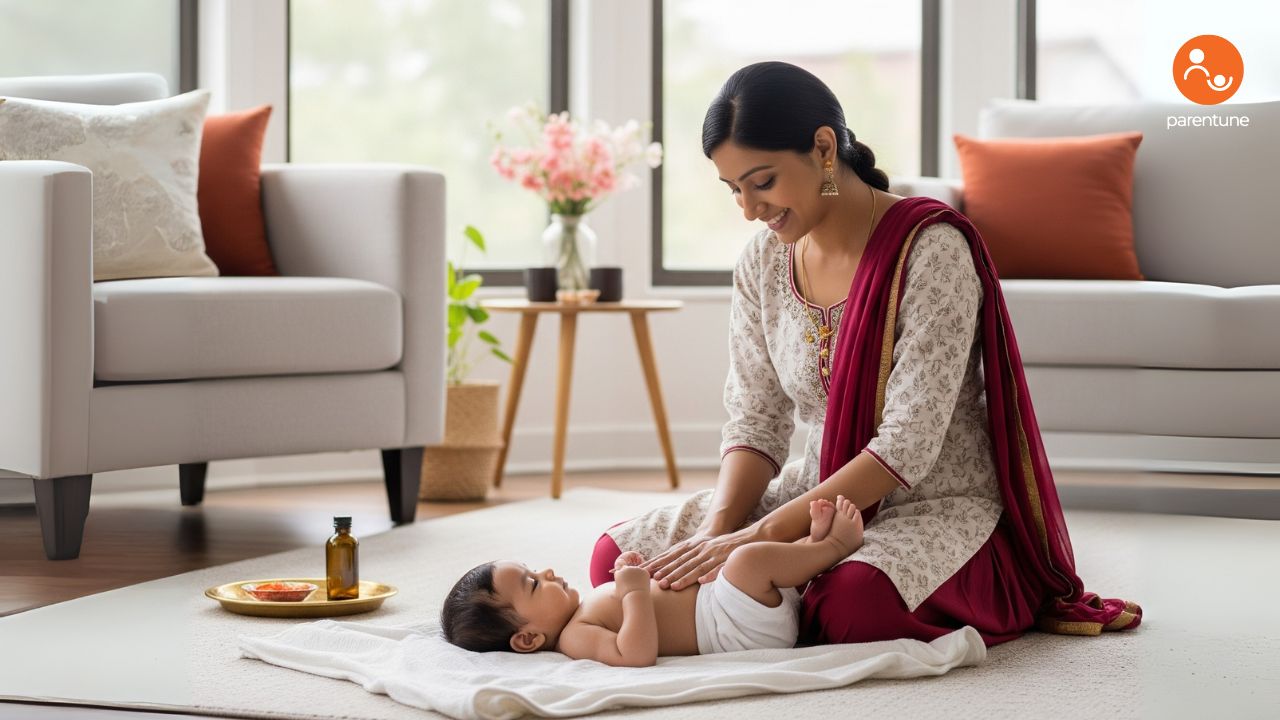developmental-milestones ...
When Can Babies Hold Their Head Up? Milestone Timeline Explained

There’s a moment every parent remembers.
That first lift of the head.
Unsteady. Wobbly. Brave.
It’s not just cute - it’s critical.
Head control is one of the earliest signs that your baby is developing neck strength, body coordination, and neurological connection. It’s the gateway to bigger things: sitting, crawling, walking.
But when does it actually happen? And what if it doesn’t, on time?
Doctor Q&As from Parents like you
Let’s unpack the timeline, the science, and the system behind this deceptively simple move.
What Does “Head Control” Really Mean?
More than a neck muscle moment
Holding up the head isn’t just about strength.
It’s about integration—of reflexes, core stability, visual tracking, and balance.
When doctors talk about “head control,” they’re looking for two things:
-
Static control: Can your baby lift and hold their head up briefly?
-
Dynamic control: Can they turn their head side to side while holding it up?
Think of it like going from learning to stand to learning to walk.
Same muscle, new coordination.
You may also like to read:
Typical Timeline: When Most Babies Hold Their Head Up
Milestone by Month: What to Expect
Every baby moves at their own pace.
But milestones do follow a pattern—an invisible script written by biology.

By 1 Month
-
Baby’s neck muscles are still developing
-
They might lift their head briefly when lying on your chest or tummy
-
Head will flop backward without support
By 2 Months
-
More frequent, brief head lifts during tummy time
-
May start to bob their head when held upright
By 3 to 4 Months
-
Most babies can lift head steadily to 45–90 degrees during tummy time
-
Can turn head side to side while lying down
-
Head lag starts to reduce when pulled to sit
By 5 to 6 Months
-
Head control should be strong and steady
-
Can hold head upright in sitting or standing position with support
-
No head lag when pulled to sit
Parentune Insight:
Most pediatricians agree that consistent head control by 4–6 months is a healthy sign of motor development. If you're unsure, the Parentune community and verified experts are just a question away.
What Helps Babies Develop Head Control?
3 simple things that matter more than gadgets
Contrary to what some marketing may suggest, babies don’t need fancy devices to build head control.
What they need is time, touch, and trust.
1. Tummy Time
It’s the gold standard.
Start as early as day 1—just a few minutes a day builds strength over time.
Make it part of your routine:
-
After diaper changes
-
Post-bath drying
-
Right after waking up
2. Face-to-Face Interaction
Hold your baby upright against your shoulder.
Talk to them. Let them lift their head to see your face. This strengthens neck muscles and emotional connection.
3. Play That Encourages Movement
Soft mats, interesting sounds, black-and-white cards, even your own face—anything that motivates them to lift and turn their head.
What If My Baby Isn’t Holding Their Head Up Yet?
Understanding delays without panic
Every baby is different.
But delays are worth noticing—not fearing.
Here’s what to look out for:
-
Still very floppy by 3 months
-
No attempt to lift head during tummy time
-
Significant head lag after 4 months
-
Doesn’t turn head toward sounds or visuals
Possible reasons:
-
Prematurity
-
Low muscle tone
-
Limited tummy time
-
Neurological concerns
Don’t wait-and-watch too long. Early intervention leads to better outcomes. Use Parentune’s Ask An Expert tool for guidance tailored to your baby’s timeline.

Why This Milestone Connects To Bigger Ones
Head control is the foundation for everything else
It’s easy to treat it like a small step.
But in the system of child development, everything builds on this one move.
-
Rolling depends on initiating head turns
-
Sitting needs a stable head to balance the torso
-
Crawling comes after the visual-motor coordination of head lifting
-
Speaking is tied to breath control, which is affected by posture
Like dominos, each motor skill sets the stage for the next.
Miss one, and the others might tumble out of sync.
Tips From Parents Who’ve Been There
Peer advice, not just expert words
One thing Parentune gets right is community.
Real parents. Real questions. Real stories.
Here’s what some of them learned the hard way:
-
“Tummy time doesn’t work unless your baby’s awake and content. Don’t force it right after feeds.”
— Ritu, mom of twins -
“Our baby didn’t lift her head till month 5. But with early physiotherapy, she caught up and is now walking before one.”
— Harshita, Gurgaon -
“We used a small mirror during tummy time. The moment she saw herself, she started lifting to look!”
— Aashish, first-time dad
Parentune's Role: Expert-Verified + Community-Tested
Parenting is equal parts knowledge and instinct.
That’s why Parentune brings both:
-
400+ verified pediatricians, child development specialists, and nutritionists
-
5M+ active parents sharing lived experiences
When milestones feel murky, you’re not alone.
Parentune bridges the gap between textbook timelines and real-world baby behavior.
Whether it’s asking a question at 2AM or checking milestone red flags, the support is real-time and judgment-free.
Final Word: What This Teaches Us About Growth
Head control isn't just a physical skill. It's a preview.
Of how your child learns to push against gravity. Against odds.
To stabilize before they soar.
Every lift of the head is a declaration:
“I’m here. I’m learning. I’m becoming.”
Track it, yes.
But more importantly, celebrate it.
Because behind that little lift is a system in motion.
One that’s quietly teaching your child the strength to stand tall in the world.
Be the first to support
Be the first to share
Related Blogs & Vlogs
No related events found.